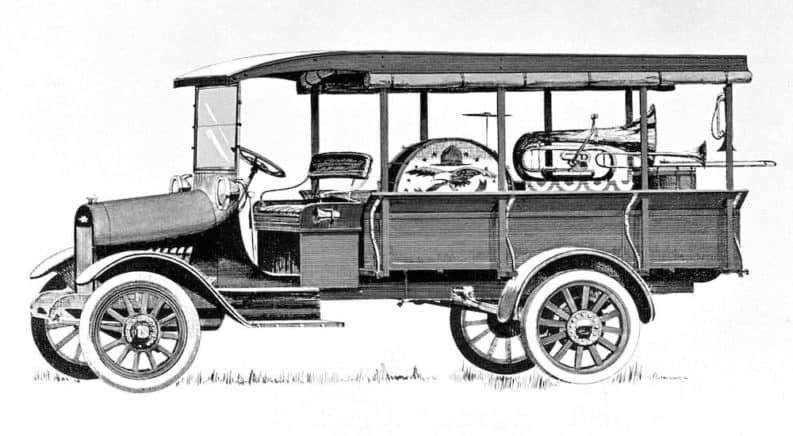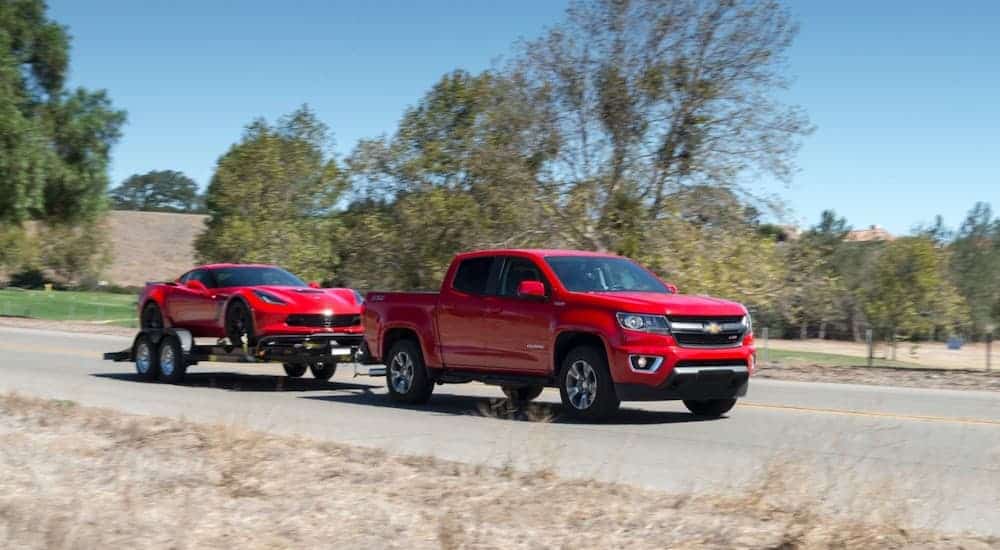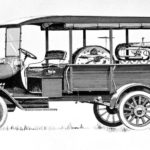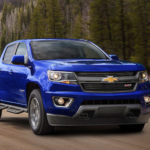A reputation is about as important to a business as the actual ability to get a job done. That’s because when you’ve got your own hard-earned money and reputation on the line, and when it’s time to make a decision, you’ll turn to a source that you trust. Often enough, that trust will be based on the trust of others. In the world of commercial vehicles, it is therefore good business to take the time and effort to produce a good product. Consider Chevrolet, one of America’s oldest and most popular brand names. Chevy commercial vehicles were a core part of the development of working vehicles and a key contributor to the Allied victory in World War II.
Today, General Motors is one of the world’s premier manufacturers of commercial vehicles, thanks to a century of excellent products that have earned the trust of millions. Today we’d like to look back on the decades of commercial vehicle developments that have led to where we are today. From the advent of the horseless carriage, through various design advances to today’s lineup of the Silverado, Express, and other Chevy trucks, 100 years covers a lot, so let’s get to work.
A Revolution of Limitless Possibilities
The potential of the automobile was lost on no one. Horses have always been expensive, high-maintenance creatures, and the opportunity to replace many of them with a low-maintenance machine had thousands, if not millions, of business owners scrambling to acquire or produce the perfect work truck. Early truck advertisements used demonstrations to exhibit their strength, like early Mack advertisements showing an 8-ton locomotive on their 5-ton truck’s flatbed. The 1910s and 1920s saw the advent of mobile homes and witnessed highly-specialized models, like Commercial Truck Company of America’s electric Lamp Trimmer’s Wagon, developed to execute a single purpose more efficiently than had ever been done before.
For Chevrolet, truck building started in 1918 with the Series 490. It was a chassis only, with the cab and body to be installed by the customer. Presumably, this enabled maximum flexibility in how each truck was kitted out, allowing business owners nationwide to let their imaginations run wild. Chevy also offered a Model T (not to be confused with Ford’s revolutionary car), which was rated to haul 1 ton of cargo. The early trucks were competitively priced at around $500 and were visually much the same as passenger cars except for whatever beds and utilities were mounted on the rear.
It wasn’t until 1931 that Chevy made factory-built pickup trucks, by which time it had already released a revolutionary creation of its own – a six-cylinder engine with an overhead valve configuration. The cost-effective cast-iron design delivered more power with greater reliability and upgraded the 1-ton truck to a 1.5-ton rating. Improved capabilities and the availability of factory-built pickup trucks widened the market considerably for Chevrolet as its products became viable for a wider range of customers and applications. In 13 years, Chevy trucks had become a permanent fixture of the commercial landscape.
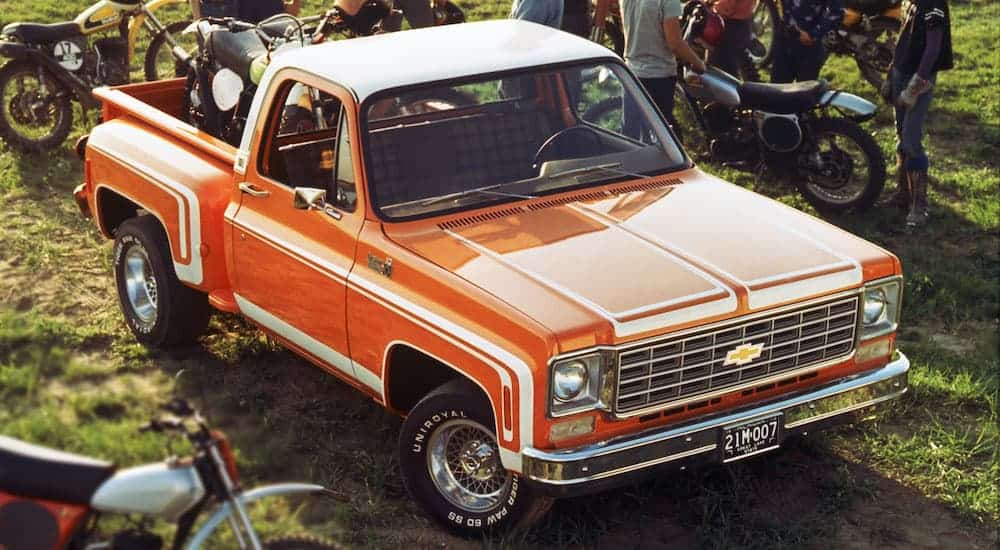
Decades of Development
It was an evolution of the original 1.5-ton truck, the G506, that took on a starring role with the US Army and Allied forces in World War II, with more than 150,000 examples being produced. Agile and mechanically reliable Chevy trucks were critical to the war effort, and the experience of supplying the war machine positioned Chevy to take off in the years that followed. The 1947 Advance Design series, with an emphasis on aesthetic design and interior passenger volume, was the first Chevy truck to follow the war. Design evolutions such as a single-pane windshield took place in this era, and the styling was the inspiration behind the distinctive and modern SSR and HHR models.
The Task Force era followed. Though short-lived, the 1950s-era design is iconic for a wraparound windshield and updated front end styling. It also marked Chevy’s first V8 in 40 years and the introduction of the iconic streamlined Fleetside models. The developments in capability, diversity, and luxury of this era set the stage for what was to come in the 2nd half of the 20th century.
The 1960s introduced the world to the Chevy C/K truck line, which would run for almost 40 years before being fully replaced by the S10 and the Silverado. The 1960s also gave us the Chevy Van. Originally produced as a utility panel van, by the end of the decade, the Van offered a V8 small block engine and passenger-ready versions. The C/K pickup truck delivered unprecedented ride quality thanks to an independent front suspension, multiple body styles like Fleetside and Stepside, and a huge range of configurations that made it extremely versatile.
The 1970s C/K and Van models brought further improvements. The industry’s first dual-rear-wheel truck with a crew cab was the 1973 C30, while wind tunnels were used to inform exterior aerodynamic design for better efficiency. And no matter what Dodge says, the first diesel pickup truck in America was the 1978 C/K with an Oldsmobile 5.7L V8. The Silverado name first appeared in 1982 as the top trim for C/K trucks, remaining as such until the entire line was replaced in 2000.
On the other hand, the unibody van design was offered with three different wheelbases, cutaway chassis cab versions, and several powertrains to suit different wants and needs. A diesel engine appeared in the 1980s and persisted until the Van was retired in 1995 after 25 years of service as an ambulance, moving truck, A-Team icon, and rock band mobile home in garages across the country.
A New Millennium
The dawn of the 21st century ushered in a new era of Chevy’s commercial vehicles. Since replacing the Van in 1995, the Chevy Express has become a ubiquitous sight, serving in roles ranging from Uhaul rental to airport shuttle and everything in between. With a huge range of engines, including diesel options, plus many body styles on the market, the Express remains a premier competitor today.
The massive medium-duty Chevy Kodiak line of big trucks, which was the foundation for thousands of school buses, non-articulated cargo trucks, and utility trucks of all designs (with the exception, perhaps, of a modern Lamp Trimmer’s Wagon), was discontinued before 2010. Since then, the only new medium-duty GM vehicle in the 2010s has been Cadillac One, otherwise known as The Beast, used for transporting the President.
However, the 2019 resurrection of the medium-duty line with the new Silverado 4500, 5500, and 6500 HD models has seen Chevy return to the market that continues to fulfill the wildest visions of truck application today. Meanwhile, a low cab forward design has been available since 2016 to execute many functions of medium-duty chassis cab trucks with an even wider range of configurations than Silverado.
Then, of course, there’s the light-duty lineup of Colorado and Silverado itself. The top-trim C/K truck became the basis for a new line of pickups in 2000, and for 20 years, the Silverado has continued a tradition of innovation and diverse application. This truck offers countless trim levels, special editions, performance packages, and powertrain options year after year. The Silverado 1500 has kept up with its Big Three counterparts in terms of maximum towing and hauling abilities while delivering significant advancements in cargo bed usability and trailering technology to make work easier than ever before. For example, Silverado 1500, 2500, and 3500 models recently introduced 15 available camera views, including a revolutionary transparent trailer view to give their lineup the safest and easiest trailering experience in the industry.
The smaller Colorado, which replaced the S10, is itself a highly capable machine compared to its predecessors. Compact and efficient with a low price tag and high towing capacity, it recently became the first midsize pickup to offer a diesel engine. With over 300 hp and 7,700 lbs of towing available, the Colorado is a great choice for enterprises in urban areas or for hauling smaller, denser products in low volumes.
Endless Innovation
The truck industry started in the late 1910s as the potential of the horseless carriage was realized. Stables full of horses and workforces bloated with redundant workers were trimmed down, and enterprises expanded exponentially, greatly increasing the capabilities of all industries as commercial vehicles enabled them to do more with less. Even today, when horse-drawn vehicles are more of a tourist attraction than anything else, the innovation continues as manufacturers like Chevy broaden their lineups to fulfill more commercial roles than ever before. The only limitation for these vehicles remains the imagination of their buyers – so what will you dream of next?

